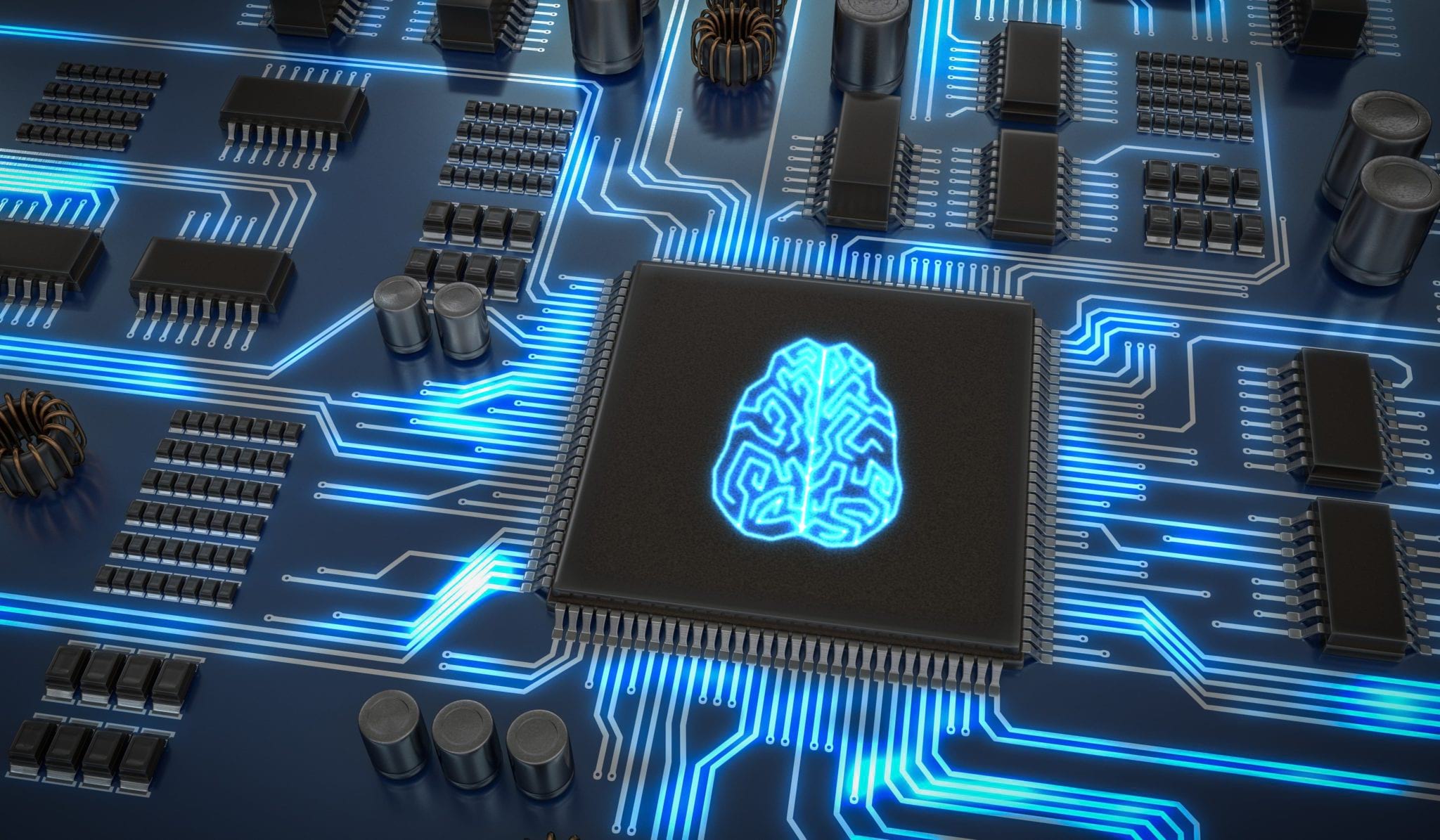How is the rise of self-learning neuromorphic computing chips paving the way for a silicon brain that can think?
Introduction
The rise of the silicon brain that can give rise to thought, emotion, and behavior in a machine seems to be on the way. This is mainly due to rapid advances in software and hardware that are paving the way for next-generation computational systems with cognitive abilities modeled after the human brain. This will prove to be a significant evolutionary development and especially crucial to enhancing machine intelligence for the complex problems that need to be solved for the future of humanity. So, as we envision rapidly evolving silicon brain taking in the data from its surroundings in cyberspace, geospace, space (CGS) and run those data through some known / unknown computing processes and then tell computer/machine to act, feel or behave in a certain way seems to bring humanity lot more questions than answers. This is mainly because, it is not known how the information on the silicon brain will be processed, stored, or recalled; how the computer commands will emerge and become effective, and even how the silicon brain will experience the sensory world around it in CGS, and how it will think, feel or empathize.
As we evaluate all these emerging questions surrounding the rise of the silicon brain, there is an intense effort already going on to create neuromorphic chips that can mimic the human brain and mind. There is also an initiative emerging to develop a neuromorphic chip based on an octopus brain. While the emerging neuromorphic chips are still nowhere near as capable as a human brain or octopus brain, much is expected to change for machine intelligence very rapidly in the coming years, as these chips begin learning to process available sensory data from CGS to evolve their abilities in real-time for the goals defined for them.
Need for Increased Computing Power
As we rapidly move towards neuromorphic computing, it is essential to understand why there is a need to move away from traditional chips and towards neuromorphic chips. One of the main reasons is that we are simply running out of computing capacity as existing and emerging technologies are accelerating global computing power consumption. Now, as technologies like artificial intelligence, machine learning blockchain, and the internet of things begin to require significant computing power, there is a need to not only process computation more efficiently but also evolve both hardware and software. Neuromorphic computing may solve this ongoing problem of computing power by doing all the functioning in the chip rather than sending messages back and forth with the more massive server/cloud and by being event-driven and only operating when it needs to, thereby imitating the brain. As a result, the rise of neuromorphic chips and computing seems to bring much-needed energy efficiency for low energy requirements, high-performance speeds, greater resilience, the capability to learn from its CGS environment, and the much-needed increase in computing power. That brings us to an important question: what will be the impact of the increased computing power on the nation’s economy?
Neuromorphic Computing Chips: Future of Artificial Intelligence and Blockchain
Neuromorphic computing chips may be the future of not only artificial intelligence but also of the blockchain, as they give us the ability to develop low energy consuming cryptocurrency as well as distributed systems. Besides, it further allows the integration of individuals and entities across nations: its government, industries, organizations, and academia (NGIOA) by potentially creating new modes of connectivity, efficiency, collaboration, learning, and problem-solving in real-time. That brings us to an important question: how will neuromorphic chips change the way new ideas, innovations, and initiatives are developed across nations?
As seen over the years, there have been formidable advances in computing and software. However, the developments have so far only been dedicated to software, and not to hardware. Neuromorphic computing and chips bring the much-needed evolution in computer hardware, allowing us to enhance machine intelligence for the complex problems that need to be solved for the future of humanity. With the evolving computing power, nations need to individually and collectively begin to evaluate where to apply the power of computing chips first. Perhaps it is time to utilize the power of neuromorphic chips and make national digital infrastructure resilient to the destructive power of electromagnetic spectrum / electronic warfare.
Emerging Systems on a Chip
Much like humans, the emerging neuromorphic chips-driven intelligent machines that will be able to understand and interact with the human ecosystem in cyberspace, geospace, and space (CGS) seem to be a fundamentally disruptive innovation. We have seen many advances already, from the emerging SpiNNaker system and many other systems. We also have many interesting applied research initiatives emerging from across nations, such as information processing in the human/octopus silicon brain to green cryptocurrency initiatives and more. Each of these initiatives is using its neuromorphic computing architecture and approach.
Now, it is a known fact that the human brain is incredibly complex, with a network of 100 billion neurons that function individually in an environment that is not fully understood by humans yet. The same can be said for the octopus brain.
To regulate human bodily functions and respond to external stimuli, the human brain neurons work with electrical and biochemical networks and environments. Moreover, while what is consciousness is still debated and not agreed upon and not fully understood yet, it seems the neurons play an essential role in human/machine consciousness. Now, it is believed that much of what the human brain does is built into the wiring, which is the neurons. So, the question is what do we know about what controls the neurons?
While over the years, much about the human brain genome has been decoded; understanding of the human brain remains complex with many unknowns. This is especially important from the perspective that nearly 90 percent of the human brain is composed of glial cells, and not neurons, and the glial cells are just coming to be understood. So, the question is, are glial cells controlling neurons? If so, how will we create silicon glial cells that will be perhaps necessary not only to clean up molecular trash created by neurons but also to play a role in learning and memory, to help repair damaged silicon brain areas and to perhaps control neurons and neural pathways itself by providing the necessary biochemical environment? Now it is also believed that glial cells can communicate with neurons and with each other through what is commonly known as gap junctions across large areas of the human brain. How vital are gap junctions and would they play a role in the silicon brain?
Moreover, when almost every disease of the human brain is partly or solely the result of glial malfunction, should we also not focus on mimicking glial cells replication on neuromorphic chips to prevent future machine malfunctions? If not, how are we creating a silicon brain without some silicon glial cells? What will be the impact if we do and if we don’t?
Acknowledging this emerging reality, Risk Group initiated the much-needed discussion on The Future of Systems on a Chip with Prof. Stephen Furber on Risk Roundup.
Disclosure: Risk Group LLC is my company
Risk Group discusses the Potential of SpiNNaker for the Future of Systems on a Chip with Prof. Stephen Furber, ICL Professor of Computer Engineering, School of Computer Science at The University of Manchester-based in the UK.
What Next
The lines are seemingly blurring between a human/octopus brain and a silicon brain. So, as we dream and work towards building / creating a silicon brain that thinks like a human brain or octopus brain, is intelligent, and has the potential to build entire systems on a chip, it is essential to evaluate the promise and perils of our pursuit for human / octopus-like intelligence in computers or machines.
While the silicon brain is aiming to improve intelligent machines to be able to handle complex systems tasks efficiently, the ultimate goal has to be how to understand how the physical processes in neuromorphic chips turn into behaviors and perceptions of the human world!
About the Author
Jayshree Pandya (née Bhatt), Founder and CEO of Risk Group LLC, is a scientist, a visionary, an expert in disruptive technologies and a globally recognized thought leader and influencer. She is actively engaged in driving the global discussions on existing and emerging technologies, technology transformation, and nation preparedness.
Copyright Risk Group LLC. All Rights Reserved
NEVER MISS ANY OF JAYSHREE’S POST





 Regulating Artificial Intelligence
Regulating Artificial Intelligence